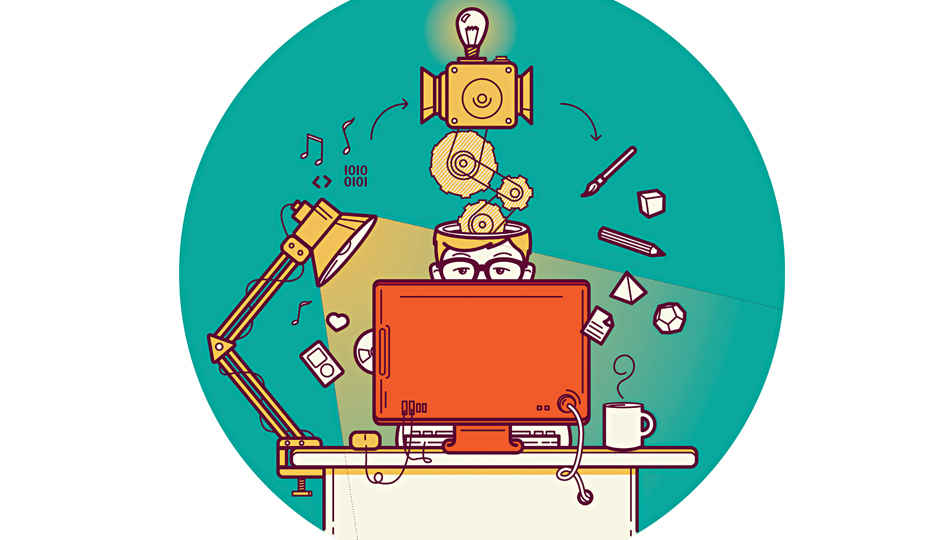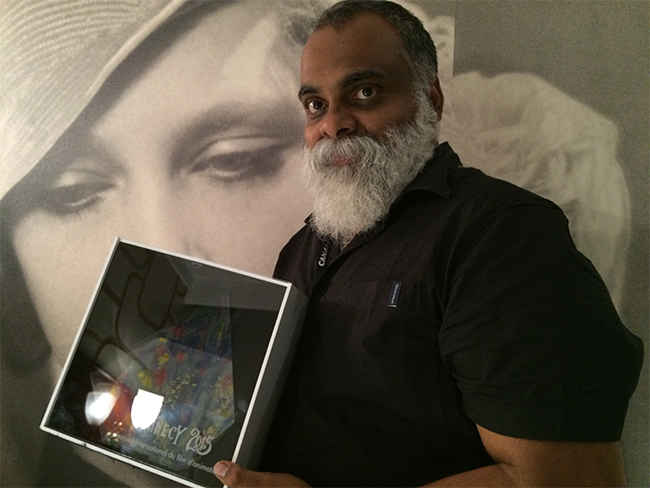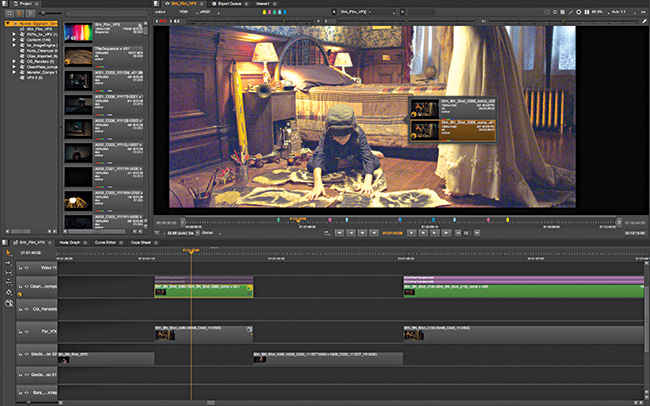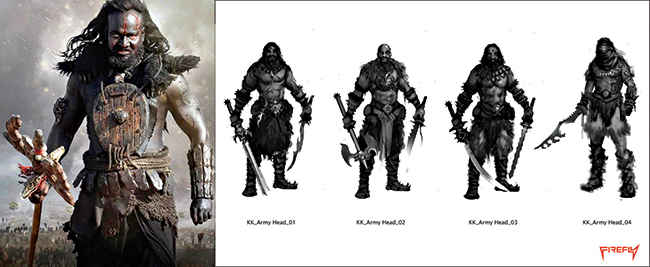Career in VFX in India

If you have love for cinema coupled with enthusiasm to learn, perseverance and creativity, then this is the career for you. Read on to learn more about this industry and ways to get into it.
Computer generated effects aren’t just for futuristic movies and superhero films anymore. They’re everywhere. Switch on your TV and a CG effect is probably hidden in one of the movie scenes or advertisements you’re watching. Visual effects (VFX) is not meant to be noticeable, and that takes some serious talent and hard work. During the course of your special FX career, you’ll work with lots of raw footage to transform it into a work of art. All you’ll need is knowledge of relevant software, an artistic bent of mind, some engineering skills and a basic understanding of physics, which will help avoid glaring mistakes like a well-built Arnold in ‘Terminator 3: Rise of the Machines’ lightly bouncing off the street like he weighed next to nothing. So, if you’re ready to enter this field, let’s look at what you can expect.
THE INDIAN VFX INDUSTRY
When the official trailer for India’s most expensive movie ‘Baahubali’ was released on YouTube, it garnered more than 60 lakh views and 35,000 likes thanks to the two-minute long clip featuring lush landscapes of mountains and waterfalls, temples, and palaces battlefields – all made possible by 17 VFX studios with 600 artists. Surprisingly, the VFX studios hired for this job were based out of Hyderabad, home to Tollywood. Proving we’re finally moving away from being just a post-production visual effects sweatshop for Hollywood movies like ‘Life of Pi’ and ‘The Golden Compass’ to actually making our own content like special FX studios, Zentrix, Lighthouse Animation Studios, Prime Focus and Studio Eeksaurus are doing today.
“India is currently well positioned in the global VFX industry”, says Danny Wilson, Creative Supervisor at Lighthouse Animation Studios. He continues, “This is due to the latest technology and equipment now easily accessible at affordable rates in the country, making it easy to start a company or project”. Due to this and the amount of visual effects these projects call for, VFX studios are popping up everywhere.
VFX effects in Mahadev were quite elaborate for being just a TV serial
WHY VFX IS EXCITING TODAY
The sheer number of studios in India now along with the increased collaborations among them has made this industry an undeniable breeding ground for aspiring VFX artists. Suresh Eriyat – Founder and Creative Director, Eeksaurus says, “VFX has the potential to create huge employment opportunities, however, that is subject to collaboration and close co-operation between the VFX entities of India. If they stand alone and compete against each other, the industry’s growth will be stunted. In Bahubali, I’m told that 17 VFX companies worked together. Such collaboration is a welcome trend for the industry as a whole.”
TV networks, production houses and ad makers are sitting up and taking notice of this development – both abroad as well as locally – and teaming up with special effects companies in India to reap the additional benefit of cost cutting. Danny suggests yet another advantage of this collaboration: “More people can get involved at the independent level as well to get more creativity so it doesn’t get bogged down to the big studios only, in turn encouraging a bit more out-of-the-box thinking, making it an exciting time to be in the VFX industry.”
Behind the scenes of The Martian
| INDUSTRY-STANDARD SOFTWARE | |
|---|---|
| Adobe Photoshop | Bojou / Syntheye |
| Adobe After Effects | The Foundry Nuke X |
| Autodesk Maya | Apple Final Cut Pro |
| Ruine / X Frog | Apple Soundtrack Pro |
| Vue | |
While industry standard software is being developed daily and different studios work with different packages based on what the project in hand calls for, the skills you learn in one package will be transferrable to another. For example, you could learn and actually use 3D with Blender (for free) and then be able to pick up another package like Maya pretty quickly. Also, while there’s no standard set of apps used across studios, the workflows are very similar.
BRIGHT FUTURE, HERE I COME! OH WAIT…
“No VFX artists were harmed in the making of this film” should ideally appear at the end of film or television credits. We don’t mean to scare you, but there are some challenges working in VFX. This industry is only for the strong-willed hard workers who persevere under tough conditions such as long hours and lack of projects. E. Suresh of Eeksaurus advises you to expect a 10-hour day during the normal in-flow of work and around 15 hours a day during peak work season. “Work, when it comes, would seem like a never-ending story. This coupled with multiple changes from clients keeps every professional on their toes.” If you love what you do, however, time flies. Also, remember, you’ll be surrounded by talented artists, innovators and veterans from the industry alongside whom you’ll be working, so you can expect to learn more than just the basics (read: things you won’t learn in a training institute ordinarily).
Another necessity for a successful career in special FX is the right kind of employee. If a company hasn’t done its due diligence, it may suffer or end up shutting down and you’ll be left with nowhere to go. Look at Rhythm and Hues that was forced to shut down after its thumping success at the Oscars for Life of Pi. Danny states, “You don’t want to work with a company that gets too big too fast. There are VFX studios that have a strong start but they don’t have the longevity to continue, to be able to foresee the next thing that happens (‘Now this is happening, so the next thing has to be this’ kind of thought process). So if a studio is letting go of employees or not paying their employees, it’s because the work isn’t there. The work is out there. You have to get your people to get the work into your studio. The key to a successful VFX studio is to have a strong clientele, a strong marketing backbone. The more VFX studios bring in international clientele, the better the exposure for these artists to grow and flourish and become something more.” Suresh Eriyat advocates working with studios that collaborate with each other (like the studios involved in the post production of Baahubali did), rather than ones that try to outdo each other and try to create their own VFX empire. So you have a level of security knowing you have growth in the future.
Suresh Eriyat Founder and Creative Director, Eeksaurus
WHAT KIND OF MONEY TO EXPECT
As a fresher, you can expect to earn around Rs.15,000-20,000 and once you gain adequate experience, anything from a lakh to a couple of lakhs and more is yours for the asking. And if you can’t decide whether to take on freelance projects or a full-time job, remember that freelancers are often paid more since they work on contract-based jobs, however, the amount of pay they rake in is undoubtedly based on their level of talent and experience. There’s a caveat though. As a freelancer in the VFX industry, as with any field, there’s no stability.
WHERE TO STUDY
There are different ways to get into the VFX industry and not all of them require an education. However, one criteria in common with recruiting departments across the board – a set of skills, which includes technical problem solving skills, a good eye for detail, creative bent of mind, basic drawing skills (so a background in Fine Art would be great, although not necessary), a solid understanding of photography and the interplay of light, color and shadow.
| RECOMMENDED INSTITUTES |
|---|
| Anibrain XDI, Pune |
| DSK SupInfocom, Pune |
| National Institute of Design (NID), Ahmedabad |
| Whistling Woods International Institute, Mumbai |
| Maya Academy of Advanced Cinematics (MAAC) |
| Frameboxx Animation & Visual Effects |
| Xplora Design Skool (XDS) |
| Raffles Millennium International, Bengaluru |
| Industrial Design Centre (IDC), Mumbai |
Nuke, a software tool you’ll soon be working on like a pro
Different approaches to learning
1. Self-study/On-the-job training
There are a couple of ways by which you can get your foot in the door. One is by self-study and practice. There are students who’ve gained employment based solely on talent, enthusiasm and knowledge gained by themselves. As long as you have a good grasp on overall design, you’ll be welcome anywhere. You can hone this craft from within your home (by say, watching tutorials on YouTube) and outshine others who’ve spent a fortune on university degrees and courses. “The most expensive school might not be the best school if it’s not the right school for that particular artist,” reiterates Danny of Lighthouse Animation Studios.
He further emphasizes, “It’s one thing to know how to use a program, whatever program that may be. Anybody can learn how to use a program – what happens when you click here, what happens when you drag here, when you do this or that. It’s another thing to implement your talent through that program.” Most often it’s only a matter of building on the areas in which you’re strong and incorporating the skills in areas in which you’re less so. Then, once hired – either in a paid position or as an intern initially – you can pick up additional skills on the job to add to your resume.
“If you’re a fresher and you get in with a decent VFX company, then this is the best school. Now you go to these VFX schools which are good because they teach you the basics, but once you know the basics, the best thing to do is get out there and know the industry because you can’t learn the industry in the classroom. You’ll understand how it works by experiencing it yourself. So the best thing to do is work with a VFX company under the guidance of a VFX supervisor, producer and often a digital effects supervisor.”
Danny Wilson, Creative Supervisor, Lighthouse Animation Studios
2. Training schools and related institutes
Another way to learn the ropes is by joining VFX training schools and related institutes, either part-time or full-time, in person or online. These will take you six months to two years to complete based on the kind of course you choose and set you back by more than a lakh. Further, you must meet minimum educational requirements to get into a good training school, however this varies from institute to institute. “While some training institutes like FX School and NID take in candidates who’ve passed out of Class 10 and Class 12, respectively (from a recognised board, of course), others like Arena Multimedia accept students from all kinds of backgrounds,” says Sekhar Mukherji, Head of Animation, National Institute of Design.
There are barely any specialised courses in India, so it’s no surprise that many VFX artists begin their careers with courses in fields other than VFX. For instance, they’ll study Animation Film Design at NID, Visual Communication at Industrial Design Centre (IDC) or film making (sound, direction, editing, etc) at Film and Television Institute of India, where they achieve a wholesome experience by learning the way the industry is structured, pick up things relevant to their interests and then work in an industry of their own choice. “If the student is intelligent enough they pick up quickly,” says Sekhar. He continues, “Three animation graduates from NID are today part of Firefly Creative Studio, one of the VFX studios that worked on Baahubali”. Companies are more interested in whether you can help run their business, rather than where you’ve studied.
Further, while training focus at institutes like Maya Academy of Advanced Cinematics (MAAC), Whistling Woods Studio, Xplora Design Skool (XDS) and Frameboxx is on visual FX, they only teach you the software and its applications. Hence, most VFX artists that we have today are those who have learnt on their jobs.
Concept art by Firefly for the Kalakeyas
IS IT WORTH STUDYING VFX ABROAD?
The allure of studying abroad can be intoxicating, so it’s best to weigh the pros and cons before making the move. One thing is for sure: It will improve your marketability and provide you with better exposure on a global scale. Also, industry experts advise that if you want to work abroad then studying abroad is recommended. However, that doesn’t mean that if you study in India, you won’t be able to work outside the country.
A DAY IN THE LIFE OF A TYPICAL VFX ARTIST
Despite it being a job with long hours, “it’s a fun environment to work in considering there’s a constant influx of ideas and inspiration to gather. Your co-workers are your family because you’re sitting there next to each other. Each department has to work together.” says Suresh. Also, no two days are the same, which means you won’t be working the same schedule all the time nor will you be doing the same work every day.
Overtime, which sometimes means spending a night or two at the office, may only be needed to be put in if a project deadline sneaks up. However, if the studio has planned the work for its employees in a way that takes into consideration their work/life balance then this shouldn’t be a regular occurrence. Similarly, the kind of work you do won’t be the same every day. “In the FX department, for example, you’re doing water simulation one day, and fire the next. The amount of work will also fluctuate. You might have less work on one day and triple the amount of work the next day,” says Danny
A career in VFX could also involve working on games
| SOME JOB ROLES IN THE VFX INDUSTRY | |
|---|---|
| Accessory Designer | Production Designer |
| Animator | Render Wrangler |
| Compositor | Rigging Artist |
| Environment Builder | Roto Artist |
| Lighting Artist | Texture Artist |
| Matchmove Artist | VFX Director |
| Matte Painter | VFX Supervisor |
| Modeling Artist | VFX Team Lead |
| Production Assistant | Weapon Designer |
FINAL WORDS OF ADVICE
This is a competitive industry and the supply of VFX artists exceeds their demand, so there are a couple of things you can do to stand out. “Stand out by showing you’re willing to learn and doing what’s necessary to get things done. Show that you’re a team player. Someone who says ‘I’m in the FX department but I want to see what goes on in the other department’ displays flexibility. Individuals who want to branch out, grow and understand the industry as a whole stand out better than artists who say “This is what I do and this is the time I do it in’. That kind of attitude won’t make you stand out.” says Danny.
“And then, there will be a job where the artist is told what to do and what they must do. You could be asked in the creative side and if you’re not prepared to do that and the person sitting next to you is, then you’ll lose out on that opportunity. Assignments require flexibility, so if you’re not prepared you could be overlooked for the next guy.” Suresh advices, “With new ideas that are relevant to the time, freshers would have the potential to beat the competition. They should also be able to let go of ideas that have been rejected and ready to work on fresh concepts. This will show clarity of thought and a vision to excel.” Once you’re ready to approach employees, you’ll need to have a showreel ready that will best showcase your abilities to potential employers. This reel will have to be built over time since it requires a lot of effort. Also, this portfolio will keep you armed and ready to present yourself for a range of roles in creative media.











